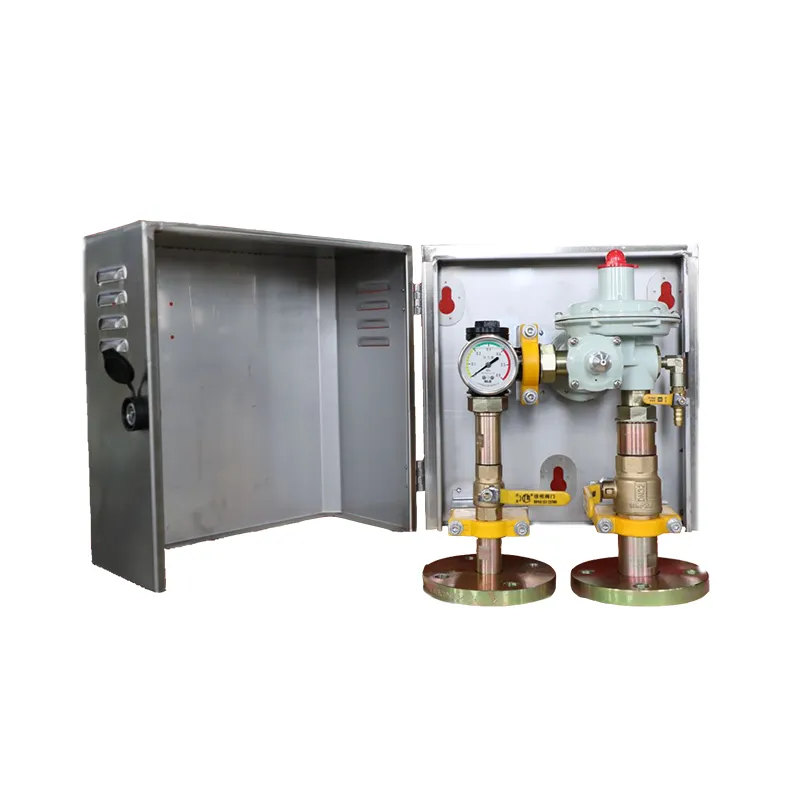
Nov . 12, 2024 20:43
Back to list
gas pressure regulator valve
Understanding Gas Pressure Regulator Valves An Essential Component in Gas Systems
Gas pressure regulator valves are critical components in various industrial, commercial, and residential applications where gas is used. Their primary function is to manage and regulate the pressure of gas delivered from one source to another, ensuring safety, efficiency, and reliability in gas systems. Understanding how these valves work, their types, applications, and maintenance can help users make informed choices and ensure optimal performance.
What is a Gas Pressure Regulator Valve?
A gas pressure regulator valve is a device that automatically reduces high source gas pressure to a lower, usable pressure. It serves as a control mechanism that maintains a steady output pressure regardless of variations in input pressure or flow rate. This regulation is crucial because many gas appliances require a specific pressure range for safe and efficient operation. Exceeding this range can lead to malfunction, inefficient combustion, or even dangerous situations like leaks or explosions.
How Does It Work?
The operation of a gas pressure regulator valve relies on the physics of gas flow and pressure dynamics. Typically, the regulator consists of a diaphragm, a spring, and a valve seat. When high-pressure gas enters the regulator, it acts on the diaphragm. As the diaphragm flexes, it adjusts the valve seat's position, allowing gas to flow out at a lower pressure. The spring assists in returning the diaphragm to its original position, ensuring that the regulator can adapt to changes in gas pressure or demand.
Types of Gas Pressure Regulators
Gas pressure regulators come in various types, tailored to different applications
. The main categories include1. Single-Stage Regulators These regulators reduce pressure in one step and are often used in applications requiring lower flow rates and moderate pressure reductions.
gas pressure regulator valve

2. Two-Stage Regulators These provide more precise control and are suitable for applications requiring a larger pressure reduction or more stable outlet pressure. They function by reducing pressure in two stages the first stage brings high pressure down to an intermediate level, and the second stage reduces it to the final desired pressure.
3. Electronic Regulators These utilize electronic controls to adjust and maintain pressure, offering enhanced precision and adaptability compared to mechanical models. They are increasingly used in automated and high-tech applications.
Applications of Gas Pressure Regulators
Gas pressure regulators are used in a wide range of applications, including but not limited to
- Residential Heating They regulate natural gas or propane fed to furnaces, water heaters, and stoves, ensuring safe operation. - Industrial Processes Factories using gas as a fuel or feedstock rely on reliable pressure regulation to maintain productivity and safety. - Medical Gas Systems Hospitals and clinics use regulators for precise control of oxygen and other medical gases delivered to patients. - Welding and Cutting Regulators are essential for controlling the flow of gases like acetylene and oxygen in welding applications.
Maintenance and Safety Considerations
Regular maintenance of gas pressure regulator valves is essential to ensure their safe and efficient operation. Users should periodically check for signs of wear, leaks, or blockages, and replace components as needed. It's also vital to ensure that regulators are suited for the specific gas type and application to prevent safety hazards.
In conclusion, gas pressure regulator valves play a vital role in the safe and efficient delivery of gas in various applications. By controlling gas pressure, they prevent malfunctions and ensure optimal performance in a wide range of systems. Understanding their functionality, types, and proper maintenance is crucial for anyone involved in gas systems, from engineers to residential users. As technology evolves, the continued development of gas regulation systems will undoubtedly enhance safety and efficiency across all sectors that utilize gas.
Next:
Latest news
-
Safety Valve Spring-Loaded Design Overpressure ProtectionNewsJul.25,2025
-
Precision Voltage Regulator AC5 Accuracy Grade PerformanceNewsJul.25,2025
-
Natural Gas Pressure Regulating Skid Industrial Pipeline ApplicationsNewsJul.25,2025
-
Natural Gas Filter Stainless Steel Mesh Element DesignNewsJul.25,2025
-
Gas Pressure Regulator Valve Direct-Acting Spring-Loaded DesignNewsJul.25,2025
-
Decompression Equipment Multi-Stage Heat Exchange System DesignNewsJul.25,2025

